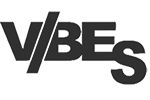Setup and Onboarding
 Student learns about cultures and ways of working in virtual multicultural organizations. Diverse working cultures impact net etiquette and company norms. It is harder to have a balance between scheduled meetings and spontaneous dynamics.
Student learns about cultures and ways of working in virtual multicultural organizations. Diverse working cultures impact net etiquette and company norms. It is harder to have a balance between scheduled meetings and spontaneous dynamics.
Students learn about people management in a virtual environment. In a virtual environment there is a risk for micro-managing, and emphasis should be on leadership instead of management. Managing in virtual space often requires more time and support to employees, both emotionally and with their roles, to reach common targets. It is important to make sure all team members are engaged through clear onboarding. lecturers can select objectives from the table below to be covered within the loop.
 Recommended meeting format: Physical meeting preferred
Recommended meeting format: Physical meeting preferred
 Recommended meeting length: 4h and 15min together with a break
Recommended meeting length: 4h and 15min together with a break
 Energiser/ icebreaker (10 min)
Energiser/ icebreaker (10 min)
Physical trivia
During the energizer, the lecturer will ask simple questions such as “Do you have a dog?” or “Does your name start with the letter A?”.
Instead of answering in words, learners have to make physical movements. A jump can stand for a yes, and a clap with your hands can be a no.
Physical trivia is an easy energizer which will only take a few minutes but will certainly help your participants feel concentrated again.
Leadership
 Recommended section length: 1h and 20 minutes
Recommended section length: 1h and 20 minutes

Invite a real (preferably top-level leader) to the course as a guest.
Main take-aways from homework (20 minn): Analyse in a bigger group the main take-aways from both individual and group level homework. Map with learners the main challenges of virtual organizations.
Ask the leader to do a short presentation about their organization (15min). And then ask him/her to reflect on the challenges mapped with the learners before. Ask the leader to reflect on how have they tackled the challenges.
Topics to cover: organizational culture (how flexible are we, can we work from anywhere and anytime, how do we report about our schedule, activities, problems, etc), how do we schedule meetings, how available are leaders for problems/questions, how to different teams & units communicate with each other, what are the challenges there and how to solve them, how to build net-etiquette, etc.
Tip: If it is not possible to invite those leaders, the lecturer can also ask couple of the learners to share their working experience in hybrid/remote teams.
 Break (15 min)
Break (15 min)
 Short theory (5min): what is net etiquette and digital well-being,and why it is important?
Short theory (5min): what is net etiquette and digital well-being,and why it is important?
Net-etiquette (10 minutes): Pre-reading assigned before class. Discuss important elements of netiquette. How to create a flexible collaboration and communication culture within the company by ensuring employee digital well-being at the same time (referring to the right to disconnect)? How you as a team member can ensure the digital well-being of others?
Experience sharing on virtual teamworking experiences
 Recommended section length: 1h and 30 minutes
Recommended section length: 1h and 30 minutes
 10-15 min (read what have you been writing in your personal diary and your takeaways after each loop.
10-15 min (read what have you been writing in your personal diary and your takeaways after each loop.
Experience sharing (1h): Use the same formula of “energizer” as in the transition from Loop 1 to Loop 2: involve the students and ask them to share 1 negative, anand d 2 positive aspects of their experience with virtual teamwork in the current course.
The instructor will moderate the discussion, either digging deeper after each response or after everyone has finished sharing their ideas. The lecturer may want to ask what was the role of technology / virtual setting / cultural differences/leadership, etc in mediating this experience. The idea is to push students to question how technology and virtual settings can alter experiences, interactions, acquisition of competencies, etc.
Tip: if the gorup is big, then the lecturer may wish to share learners into smaller (random) groups to share their experiences first with each others an then boiling down to 1-2 takeaways to share with the rest of the group.
 Landing exercise to finish the loop (15 min)
Landing exercise to finish the loop (15 min)
Lecturers can ask learners to take 5 minutes to write down the main take-aways from the loop and share 1-2 that are most important to them with the rest of the learners.
Homework

Final individual assignments
a. Learning diary
Question 1. Evaluate on a scale from 1 (poor) to 5 (excellent) how your team can be classified in terms of ‘becoming an effective multinational virtual team’. What, in your opinion, are the most decisive factors determining your evaluation of your team?
Question 2.Identify key takeaways from the whole course and determine which ones are valuable and why, and which ones you would like to explore further/ put in practice in the future?
Question 3. Create a list of concrete activities/actions for yourself in order to deepen and also apply the knowledge gained.
Question 4. What, in you opinion, is the role of digital wellbeing within organisations? Is it the responsibility of managers or individuals (or both) to foster higher digital wellbeing, and why do you think that?
Question 5. Describe how you as a virtual team members will act in the future, when working in VT-s. What will be the most important things that you can do to enhance the prodictvity and teamworking experience for everyone?
Question 6. Reflection about the course
-
-
- What did you like the most about the course?
- What would you like to change about the course?
-
 Final individual assignments
Final individual assignments
a. Practice theory for building global virtual teams
Write your own practice theory on “Organizing, managing and leading geographically disbursed teams, with multinational team members who work mostly in a virtual context when solving consulting cases (GVT).” Write your practice theory as if you were to write a manual. Consider what are the most important factors and processes you have to establish to develop an effective team. Consider the following:
- First, make a list of factors and processes that you believe have the greatest influence when establishing and developing an effective GVT.
- Consider how a team might be able to build a capacity to solve diverse problems (tasks).
- Ponder what the role of relationships, leadership, cultural differences, etc. in GVTs is.
- Think about the role of establishing processes, routines, and about setting different roles for members.
- Thing about how to avoid and manage conflicts in virtual teams.
- Then, read/review your own reflections documented in this paper related to the three cases. Start with the reflections for case 1.
DELIVERABLE: Write a concise practice theory (or manual for people who will work in a similar setting) on how to establish, manage & lead effective GVT.

